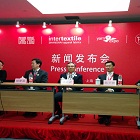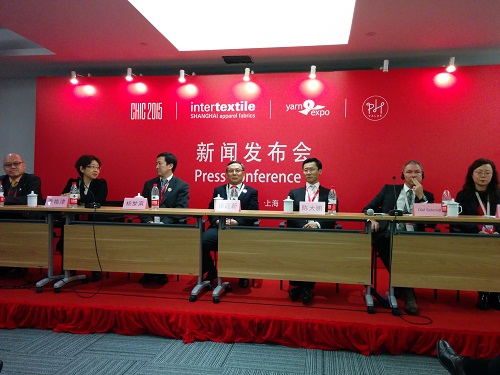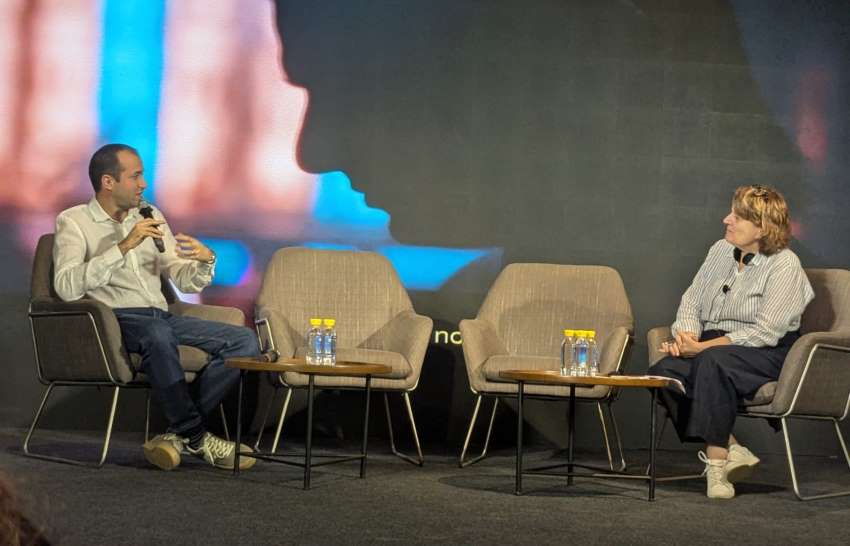FW
In a big revelation, Bangladesh commerce minister Tofail Ahmed has alleged that foreign buyers are not paying fair prices for readymade garment products imported from the country. Tofail, while addressing a seminar ‘Bangladesh – Flaming the future: A high level conference on RMG and Beyond’ in Dhaka, said that money is required to usher in improvement in factories. Bangladeshi exporters are not getting a fair price for their products from overseas buyers.
Ahmed further said that export earnings will be more than $33 billion during the current fiscal and the country will transform into a middle income one till 2021. He expressed satisfaction over improved factory situation and RMG sector had been able to avoid any unwanted incident during last two years.
The Denmark Embassy in Dhaka and Danish Business Development Ministry jointly organised the seminar on the occasion of opening a new strategic sector initiative also marking the stepping into second year of the Rana Plaza incidence.
The Tirupur Exporters' Association (TEA) has urged the Tamil Nadu government to set up a textile board with a focused approach for the development of the sector in the state. It feels there is a good scope to increase global market share from the current level of about 2.6 per cent by exporting value added products and synthetic products.
TEA has also urged the state government to provide incentives for setting up technical textile units in Tamil Nadu. It says the state textile department needs to work closely with industry for the development of technical textiles. Requesting the provision of five per cent interest subsidy under the TUFS, exporters say the state textile policy should provide five per cent interest subsidy and 10 per cent capital subsidy for modernisation or it should include expansion of garment units on the lines of the Gujarat and the Maharashtra textile policy, which provide five and seven per cent interest subsidy respectively.
Tirupur contributes about 45 per cent of total knitwear exports from India and exports only cotton based garments. TEA says Tamil Nadu should bring out a separate state export policy in line with the foreign trade policy of the centre to give a focused approach for export development of the state.
www.tea-india.org/
The Ministry of Agriculture in Egypt is working to boost cotton cultivation and set a deadline for planting cotton. It is conducting laboratory tests to determine seed quality. In addition, the ministry will identify certain cotton varieties for cultivation across various governorates. According to the ministry’s Central Administration for Seed Production (CASP), Abdul Kareem al-Masry, they are serious about efforts to support the cultivation of cotton and to bring this sector back to life. He also added that a unified planting season should improve the situation.
Cultivated area is expected to reach 300,000 acres this year with crop yields expected to touch two million kantars, at a price of 1,250 to 1,400 Egyptian pounds ($164 to $184) each, depending on quality. In the year 2000, Egypt cultivated 518,000 acres of cotton, but the number fell to 325,000 by 2010 and 217,000 by 2014, he said.
The decline in cotton production was due to markets flooded with cheaper imported version, which has been able to compete with local production. Cotton cultivation is not the sole responsibility of the Ministry of Agriculture. The Ministry of Education also has to make efforts towards capacity building with schools offering training to students and encouraging them to take an interest in the cotton industry.
Greenpeace East Asia has released 'Detox Catwalk', an online platform assessing how effectively major fashion brands are in removing toxic chemicals from their supply chains and tackling water pollution. Inditex (the company that owns Zara), Puma and Valentino join 13 other Detox leaders in this year’s ranking, while sports brands Nike and Lining are labeled Greenwashers for their failure to take credible action to Detox.
Fashion companies that have committed to Detox over the past four years represent approximately 10 per cent of the global apparel and footwear market. This momentum is creating a new standard in sustainable fashion, sparking a transparency revolution and proving that zero discharge of hazardous chemicals is within reach by 2020.
The Detox Catwalk assesses how committed companies have performed against key criteria like: how they are working to eliminate known hazardous chemicals, including hormone disrupting chemicals such as PFCs, nonylphenols and phthalates, from their products and processes; what steps they are taking towards full supply chain transparency.
The four-year Detox campaign is changing the way companies are working with their suppliers and is starting to shift chemical regulations in manufacturing countries. It demands fashion brands to commit to zero discharge of all hazardous chemicals by 2020 and require their suppliers to disclose the release of toxic chemicals from their facilities to communities at the site of the water pollution.
With numerous overseas exhibitors looking to take advantage of the burgeoning regional textiles market the Intertextile Shanghai Apparel Fabrics-Spring Edition 2015 took off in China. This edition has a number of country and region pavilions from Asia. And there were many returning pavilions from Japan, Korea, Pakistan and Taiwan, as well as the Texprocil Pavilion from India. These are in addition to the recently announced Portugal Pavilion, Germany and France zones, and Milano Unica Pavilion from Italy.
The ongoing fair is taking place at the National Exhibition and Convention Center, Shanghai for the first time. The hall is almost double in size compared to the exhibition area of last year’s spring edition. More than 2,000 exhibitors are displaying their latest collections at the venue, over 35 per cent increase compared to 2014.
After an absence, the Japan Pavilion returned this spring. The pavilion has around 20 exhibitors and is organised by Japan Fashion Week Organization. The Korea Pavilion also returned after appearing at both editions of the fair in 2014. Over 90 exhibitors are showcasing a wide range of man-made and functional fabrics. Organised by the Korea Fashion Textile Association (KFTA), the exhibition space has expanded by nearly 50 per cent compared to last year.
Taiwan suppliers have a strong reputation for quality and innovation, and around 50 exhibitors at the Taiwan Pavilion are displaying their latest accessories, cotton, denim, embroidery, jacquard, knit, lace, polyester, spandex, wool blends and woven fabrics. Shifting focus to South Asia, India is represented by the Texprocil Pavilion, organised by The Cotton Textiles Export Promotion Council, and is showcasing a wide range of cotton fabrics and yarn. this year’s Pakistan Pavilion with seven exhibitors is dedicated to cotton fabrics for casual wear and jeans wear. The pavilion is organised by the Commercial Section of the Embassy of Pakistan.
As demand continues to grow in the Chinese textiles industry for premium European products, the fair is also displaying leading apparel fabrics and accessories suppliers from SalonEurope and the Milano Unica Pavilion. Over 2,000 domestic and international exhibitors are participating in the fair this year. The Milano Unica Pavilion has developed a reputation for showcasing only the best of the best from Italy, and this year is no exception. Around 120 producers are presenting their latest collections of premium apparel fabrics and accessories for ladies and men’s wear. Making a repeat appearance at the Spring Edition is the Portugal Pavilion, organised by Associacao Selectiva Moda, which has over 10 exhibitors showcasing high-quality shirting fabrics. Also in SalonEurope is the France zone, which after a strong showing at the Autumn Edition 2014, has made its debut at this year’s fair.
Bangladesh Accord on Fire and Building Safety, a platform led by European brands and retailers, has debarred a local apparel making company due to noncompliance. Accord also issued warning letters to another 13 factories where remedial works for ensuring safety were not satisfactory.
Accord engineers identified serious fire safety lapses in Mega Chois Knitwear and asked the authority to evacuate the building temporarily for necessary remedial works, but the factory owner refused.The safety concerns were of such an extent that the building was determined unsafe for production and occupancy until such time that urgent remedial measures were completed and a proper exit system established.
As per the findings, the factory has only one exit for over 600 employees which has created an extremely unsafe situation. Mega Chois Knitwear is considered a non-compliant supplier and ineligible to produce for any Accord signatory companies. The factory owner says, he is not willing to upgrade safety standards as per recommendations of Accord as the company manufactures mainly for Korean buyers who are not concerned over safety standards. Accord has warned of cutting business relations with 13 more factories for their failure to take remedial steps.
bangladeshaccord.org/

The latest edition of Intertextile Shanghai Apparel Fabrics-Spring Edition 2015 opened at a brand-new venue ‘the National Exhibition and Convention Center’ in Shanghai on March 18. The three-day fair has a record number of exhibitors participating this time and there is buoyancy among exhibitors and visitors. Over 2,600 suppliers from 24 countries and regions against 1,469 last year, are participating in the biggest ever Spring edition.
“The extra space we have allows us to not only welcome more exhibitors for our buyers to source from, but also to hold concurrent fairs alongside Intertextile Shanghai. And being located closer to the textile manufacturing hubs in the areas surrounding Shanghai, we expect more quality domestic buyers to attend. Plus, with the addition of CHIC this year, as well as the return of our Yarn Expo fair and PH Value, we now cover the entire textile value chain, something both exhibitors and buyers here can benefit from,” said Olaf Schmidt, Vice President, Textile and Textile Technologies at Messe Frankfurt, in his inaugural speech.
Country pavilions and special zones
Various overseas exhibitors are exhibiting their range through different pavilions like the
SalonEurope, Milano Unica Pavilion from Italy, the Portugal Pavilion, the Germany zone, and the France and Premium Wool zones along with country and region pavilions from Japan, Korea, Pakistan and Taiwan, as well as the Texprocil Pavilion from India. For the first time at an Intertextile fair, the Origin Africa Pavilion from Kenya is also present and the Verve for Design zone has doubled in size compared to the 2014 Spring fair. This area features design studios from Australia, France, Hong Kong, Italy and the UK displaying their creative and original fabric pattern designs.
While Verve for Design returns to the fair this year, the All About Sustainability marks its debut after its popularity at last October’s Autumn Edition. This zone is in response to increased interest on sustainability in the industry, especially from China in recent years.
Trend forums and seminars
This year’s fringe program is again keeping the industry up to date on latest trends, market information and more. Four international and Chinese Trend Forums are providung guidance for next season’s trends, with the Intertextile Directions Trend Forum designed by experts from the around the world, and the Fabrics China Trend Forums focusing on menswear, ladies wear and colours.
A series of seminars is also being held, with speakers from both China and abroad delivering informative lectures and presentations on design and trends, technology, sustainability issues, and market information and business strategies.
Three concurrent textile industry events are also taking place at the same venue. Yarn Expo Spring, PH Value previously known as the China International Knitting Trade Fair and CHIC, the 23rd China International Fashion Fair are also being held from March 18 to 20. www.intertextileapparel.com.
Southern India Mills’ Association (SIMA) has appealed to the Union government to take a quick call on foreign trade policy having textile and clothing -sector specific measures to help the segment explore opportunities. SIMA chairman T Rajkumar says with rupee’s fall against the Euro negatively affecting business, India is losing business opportunities to countries such as Pakistan, who enjoy duty free access to the European market. The industry body has appealed to the government to make benefits under the focus market incentives scheme to be competitive till the country enters into free trade agreement with the European Union countries, the US and China.
Further, it has demanded Rs 3,500 crores for the ongoing Technology Upgradation Fund scheme to meet liabilities of the last three quarters and for the next financial year and another Rs 3,000 crores for pending cases under the scheme. It has also asked for a reduction in excise duty on manmade fibres from 12 per cent to six per cent on par with cotton and removal of import duty and special additional duty. The industry also sought removal of six per cent excise duty on shuttleless looms.
The association further appealed for a reduction in cost of coastal shipping transport by 20 per cent to 30 per cent by providing exemption from fuel duties and sea fare taxes.
www.simamills.org
As the leading distributor of market intelligence, MarketResearch.com has entered into business partnership with Centre for Trade Facilitation and Research in Textiles (CTFRT), which allows marketing and distribution of CTFRT's proprietary market analyses through MarketResearch.com website.
The new relationship offers business professionals throughout the world easy access to complete product descriptions and tables of contents from research publications. Visitors to the MarketResearch.com website have the ability to purchase the material directly through MarketResearch.com’s secure server.
CTFRT’s products will get increased exposure through MarketResearch.com’s web traffic with a positive impact on its business as the reports make it into the hands of a wider global audience. CTFRT provides global textile industry and trade economic intelligence for business, industry and policy makers. The statistics based analysis acts as a comprehensive guide for fiber to fashion chain and textile machinery suppliers. Its most recent publication is Global Textile Industry: New Dynamics, Investment Manufacturing Locations and Direction of Trade 2020.
MarketResearch.com is a leading provider of global market intelligence products and services. With research reports from more than 720 top consulting and advisory firms, it offers instant online access to the world’s most extensive database of expert insights on global industries, companies, products and trends.
After the government in Cambodia ordered an increase in wages of garment workers, western apparel companies, are seeking better deals from other destinations. The Southeast Asian country's garment and textile exports increased 1 per cent in the January-November period of 2014, to $4.52 billion, according to the Garment Manufacturers Association in Cambodia. Full-year figures have yet to be released, but the industry expects a single-digit growth.
Grand Twins International, Cambodia, a Taiwanese garment company's local unit reported a 12 per cent decline in 2014 to roughly 230.7 billion riel ($57.1 million). Net profit plunged 52 per cent to around 14 billion riel. The industry started suffering after labour disputes hit it in 2013, with workers’ agitation leading to large-scale strikes around the country for increase in wages. Some of the demonstrations led to riot like situation. To ease tension, the government increased monthly minimum wage from $61 to $80 in 2013, to $100 last year, and to $128 in January. After adding other benefits like housing assistance, transportation and other allowances, a worker’s minimum earning reach to more than $150.
However, it is much higher compared to neighboring Vietnam where the highest minimum wage in urban areas is around $140 and its productivity is 30 per cent higher than Cambodia. So, companies like Gap, H&M, Walmart and other are moving their orders from Cambodian factories to other destinations that offer lower production costs.
www.gmac-cambodia.org












